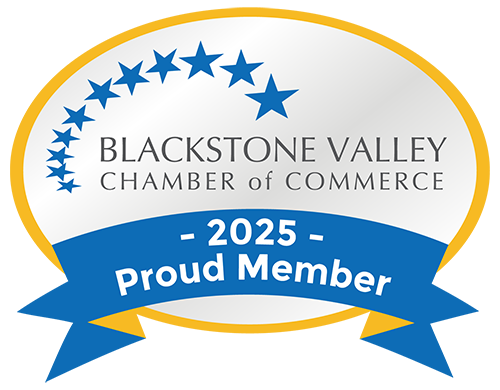JS Business Solutions Blog
Using the right technology can streamline operations, enhance customer engagement, and boost overall productivity. Despite its potential benefits, many small businesses often make significant mistakes when it comes to technology implementation. Let’s explore some of the biggest technology blunders small businesses make and how to avoid them.
IT strategies play a pivotal role in helping companies navigate this complex terrain, but they often require a substantial amount of time to be effectively implemented. This week, we'll explore the reasons behind the seemingly sluggish pace of IT strategy implementation and why patience is indeed a virtue in the world of technology.
Much of our blog content discusses the technology used by businesses as a part of their operations, but technology is extremely valuable for several other parts of running a business, including managing relationships with existing and potential customers. The technology of marketing can be remarkably effective for getting the word out about your goods and services, and you will want to ensure your IT is up to the task of managing it.
Businesses make money by providing services to their customers that bring them value. This business model is at the core of managed IT services, where the offerings are widely considered to pay for themselves, so to speak. Individually, the services might not seem like they would impact your bottom line that much, but when combined, they are a force to be reckoned with.
Google is one of the world’s biggest technology companies, but have you ever wondered how exactly it manages to maintain its iron grip on the search engine market? It’s especially curious when you consider that there are other major technology companies out there that might want a piece of the pie, like Apple, yet choose not to. Well, it turns out there is a very good reason for that, and as you might suspect, large amounts of money are involved.
Businesses have been utilizing flexible working conditions in increasing droves, due in no small part to the pandemic, but many continue to hold onto these policies in at least some capacity. Businesses, therefore, need to be very cognizant of data retrieval policies and security measures that can keep their organization safe.
Make no mistake, you want your business to grow. There is no better sign that you are resonating with customers and providing the value you set out to deliver. Unfortunately, for a lot of companies, they simply aren’t prepared when their product or service takes off and it ends up ruining what could be a very good thing. Today, we’ll take a look at three actions you can take to keep your business humming along when it sees extraordinary growth.
When people talk about the growth of technology in business, no small part of that is what the Internet of Things makes possible. From cost control, to automated scheduling, to helping build operational efficiency, the IoT can present a lot of interesting benefits for a business if you strategically implement systems designed to use the data created by smart devices. Let’s take a look at some of the ways IoT works for small businesses.
Last week, we wrote about how patience plays a big role in people’s ability to be productive and efficient. This week we want to explore a few ways to help the people in your organization to become more patient. We all know people in our lives that seem like they could definitely take a chill pill. If that is you, using these four suggestions can help you be more patient in situations that demand it.
Entrepreneurship is extremely frightening to a lot of people, and that’s probably why a lot of people make the choice to work for others. If you think about it, a lot can go wrong; a lot more than can go right. Today, we thought we’d highlight how business owners are able to get through all of the problems to forge ahead and create successful companies.
People can be very productive. They can also be pretty terrible at being productive. The staff that can find consistency in their productivity typically results in a pretty successful business. Obviously, people have all types of suggestions on how to improve staff productivity, individual productivity, and a lot of it is just hitting on the same stuff. There is one variable, however, that is found in a lot of productive people: Patience.
It’s not uncommon for an employee to hold a second job outside of your office, whether it’s a side gig that they are trying to turn into a passion project or a side hustle just to make ends meet or put away a little extra money every month. Workers holding multiple jobs is certainly not unheard of—if anything it’s more common than ever, thanks to the remote work surge. How does this phenomenon impact your organization?
When trying to determine if a certain piece of technology should be replaced or just taken away entirely, you should first ask yourself if the technology affects your products or services in any discernible way. If the technology is something that helps with productivity and efficiency to aid in the production or delivery of said product or service, then it’s worth investing in.
There are a few different types of stress that may be present in your business right now, either or both of which could be causing no small amount of distress to your team members and disruption to your processes. Let’s explore the sources of these stresses—digital/workplace friction and interpersonal friction—and what can be done to help resolve them.
There are literally thousands of pieces of technology available that accomplish something positive for your business. Whether they are communications tools that help your team collaborate and build a better client-support system, gadgets and software to help streamline your team’s ability to get work done, or devices to help advance the company’s mobile strategies, considering what you can do with innovative new technologies is a responsibility of a forward-looking executive or small business owner.
Now that many of us have been working remotely for the past 18 months, what are your thoughts on the concept of a remote or hybrid office? Have your opinions changed at all, or are you still clinging to your previously conceived notions of what it would be like? It does not help that some major companies, like Microsoft, are sending out mixed signals on their own experiences with remote work. What can we learn from these experiences?
Instant messaging is a solution that has picked up in the business world, and for good reason. While email allows for more passive communication, instant messaging allows for more instantaneous communication, similar to a phone call in its urgency. But are you using instant messaging in the proper way?






















